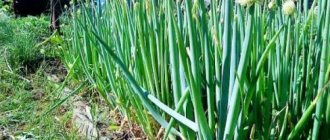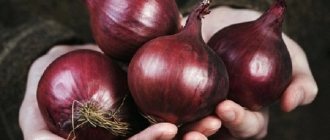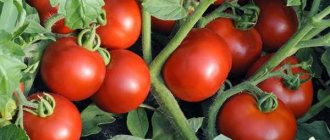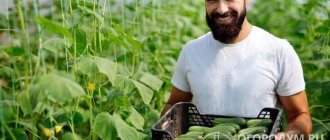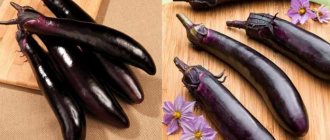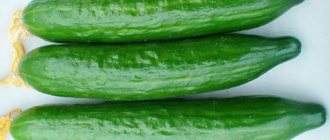Of the perennial onions of Russian selection, the April onion is rightfully considered one of the most reliable and time-tested. This variety of vegetable crop was bred by specialists of the Far Eastern Experimental Station VNIIR, entered state variety testing in 1974, and was registered in the State Register of the Russian Federation in 1981. Belongs to the semi-sharp, salad type: juicy, aromatic green leaves and a long bleached false stem are used for food, which are perfect for fresh consumption.
“April” onion (pictured) is a perennial, winter-hardy plant that does not form bulbs, and is cultivated exclusively for personal use and commercial production.
“April” is distinguished by its annually recurring secondary (autumn) flowering, since the plant is early ripening and highly branched - a typical representative of the Russian subspecies of batuns. The reason for secondary flowering is explained by the high precocity of new buds.
The variety is well adapted to various soil types and climatic conditions. It is recommended for cultivation throughout Russia in garden plots, homesteads and small farms. It is successfully cultivated in Ukraine, Belarus and other neighboring countries. Gardeners very often cultivate it in a two-year crop: the seeds are sown in open ground in June - July, and in the spring of the following year they receive high yields of lush greenery.
Main characteristics
The most significant characteristics of the variety are given in the table:
| Parameter | Characteristic |
| Culture | Onion (Allium fistulosum L.) |
| Variety | "April" |
| Ripening time | Early: reaches technical ripeness 80-95 days after emergence; according to originators: 102-142 days |
| Plant type | Peninsular |
| Purpose | Salad |
| Growing conditions | Gardening |
| Productivity | High: 2-4 kg/m2 (up to 6.7 kg/m2); in industrial plantings – 10-18.1 t/ha (maximum 31.3 t/ha) |
| Weight of one plant | About 70 g (maximum 200-300 g) |
| The shape of the bulb (a small cylindrical thickening in the basal part, which smoothly turns into a false stem) | Elongated, massive |
| Scale color | External (dry) dark yellow; internal (juicy) – white |
| Leaves | Tubular (vapid), hollow inside, emerald green |
| Taste qualities | Semi-sharp, juicy, tender |
| Storage duration | 7-10 days |
| Year of entry into the State Register of the Russian Federation | 1981 |
| Recommended growing regions | All |
| Originators | State Scientific Institution Far Eastern Experimental Station VNIIR (Vladivostok); CJSC "Lance Company" (Moscow) |
Under the most favorable conditions, the weight of one “April” plant can reach 300-400 g (according to the originator)
Landing
Before sowing, seeds are soaked in a disinfectant solution (1% potassium permanganate, 1% Fitosporin are suitable). Duration of exposure - up to 12 hours. To speed up germination, they are kept in warm water for 20-24 hours (changed once every 5-6 hours).
By means of bubbling, the water is saturated with oxygen, which also contributes to the rapid activation of the seed material.
Sowing is possible over a long period - from April to August inclusive (for cultivation on the site). When cultivating at home, planting seedlings begins 1.5 months before the planned cutting.
Predecessors for the variety are pumpkin, tomato, pea, and cruciferous species. Planting after cucumbers, carrots and garlic is undesirable. The soil is prepared in the fall - plowed to a depth of 15 cm, and fertilizers are applied at the same time. For 1 m2 you need:
- 7-8 kg of compost;
- 250 g of ash;
- 40 g superphosphate.
When digging in spring, mineral compounds are added per 1 m2 (15-20 g of urea, 30 g of potassium sulfide, 50 g of superphosphate). Fertilizers are plowed 8-10 cm deep.
Furrows are laid on the beds in increments of 20 cm, and 3 grooves are made in the bed. A distance of 50 cm is left between the ridges. The depth of the soil is up to 1-2 cm. The step between holes is 5 cm. Sprinkle a thin layer on top and water moderately.
To obtain early shoots, the beds can be covered with lutrasil or spunbond. Covering materials allow you to maintain temperatures 5-6 degrees higher than in open beds.
Onions can be planted in winter sowing. Planting begins in October - November when the temperature drops to 3 degrees. If the plantings are dense in the spring, thinning can be done.
Productivity
This variety is recommended for cultivation in open ground everywhere: both in the southern regions and in areas with a less comfortable climate.
According to the results of research conducted by specialists from the experimental collection section of the Department of Horticulture and Viticulture of the Don State Agrarian University in the conditions of the Rostov region, in order to obtain the earliest products, it is advisable to grow the “April” onion in a perennial culture. At the same time, the weight of the above-ground part of one plant is about 70-75 g, and the weight of the entire bush is up to 300-400 g.
The results of 2-year field trials conducted at the experimental site of the Don State Agrarian University (Rostov region) confirm the high marketable yield of the variety: 31.3 t/ha
The productivity and marketability of "April" largely depend on climatic and weather conditions, the mechanical and chemical composition of the soil, and the intensity of agricultural technology used. In a perennial culture, it is recommended to grow it in one place for no more than 5 years, cutting 2-3 greens per season.
Growing on a windowsill and in a greenhouse
As an option for constant enjoyment of greenery, grow it on the windowsill. The cultivation technique is no more difficult than in the ground. A simple way: in the fall, dig up several bushes along with a lump of soil and place them in pots or boxes. The age of the bushes is 2-3 years. The soil where you are replanting is also fertilized. Maintaining the required humidity and temperature conditions. Greens will appear faster with this method. Planting from seeds will result in a longer-lasting harvest. It is recommended to mulch the pots where the seeds were sown.
If the window sills are small or completely absent, greens can be grown in a greenhouse. Here the presence of a large amount of sunlight is necessary. Polycarbonate will be a good material for a greenhouse. Make the roof at an angle so that in winter the snow cover cannot damage it. Early November, time for sowing. The first 3 years of the batun's life are the most productive.
Beneficial features
The biochemical composition of this onion greens contains many vitamins (C, E, K, PP and group B), iron salts, magnesium, potassium, organic acids, essential oils, phytoncides and other biologically active substances.
In terms of its anti-scorbutic properties, the April onion is significantly superior to a number of widespread vegetable crops (lettuce, onions, etc.).
The chemical composition largely depends on cultivation technologies and agrotechnical practices, soil, climatic and weather conditions. According to reviews from experienced vegetable growers, green onions harvested in the rainy season are practically not stored and contain a small amount of sugars and ascorbic acid.
Young batun feathers are juicy, tender, with a pronounced semi-sharp taste. As a rule, the higher the leaf is located on the false stem, the younger it is and the more ascorbic acid it contains. Greens need to be cut off in a timely manner, since when they overgrow, the leaves become too thick and rough, and their nutritional value sharply decreases. The larger the leaves and the greater their number, the higher the yield of marketable onion products.
The strongly branching “Aprelsky” has dark green leaves growing in large numbers (an average of 24 pieces), and their height reaches 30-35 cm
The very early growth and high content of ascorbic acid in green feathers puts them in first place in nutritional importance among other edible parts of the plant. Leaves of different ages contain different amounts of vitamin C (ascorbic acid). We present the average data in the table:
| Tier of leaves | Amount of ascorbic acid in 100 g of fresh product (mg) |
| Lower | 29,7 |
| Average | 49,4 |
| Upper | 47,7 |
Onions are widely used in cooking: raw in salads; boiled and stewed - as a side dish for meat and fish dishes; dried – as an aromatic seasoning
Advantages and disadvantages
What are the positive properties of the variety:
- early ripeness;
- mass friendly maturation;
- good commercial harvests;
- cold resistance;
- frost tolerance;
- increased levels of vitamins;
- significant productivity;
- excellent product and consumer properties;
- stress resistance;
- complex immunity to fungal and bacterial pathogens.
Of the minuses:
- Requires a sunny location.
Recommendations for agricultural technology
Planting material for this variety is offered by many large agricultural companies in our country. For propagation, you can also use seeds collected from your own plants, but in order to maintain the yield and stability of the variety at the proper height, the seed stock should be regularly updated, giving preference to trusted producers. As a rule, such seeds undergo special preparation, which guarantees fast and friendly germination; stimulation of growth in the early stages; plant resistance to weather stress and diseases; uniformity of products and improvement of the taste of greens.
In the photo - onion seeds of the "April" variety in packages from various manufacturers
Batun is cultivated both as a perennial crop, with 2-3 (up to 5) cuttings of greenery for each growing season, and as an annual crop, removing leaves 25-30 cm high along with the roots. In the conditions of the Moscow region, when growing “April” onion from seeds, it is recommended to sow in spring, summer (June - July) and, as an exception, before winter. According to reviews, autumn crops (September) often die during overwintering, despite the frost resistance of the variety. In addition, according to the observations of gardeners, at the same spring or summer sowing time, the fewer seeds are sown per unit area, the more bolting plants there are. The degree of bolting in the second year and subsequent years of the growing season directly depends on the overall development and intensity of branching. When sowing is thickened and carried out at a later date, the yield of green feathers in the spring of next year is lower.
For propagation, non-seedling and seedling methods with sowing seeds are used, as well as the vegetative method of dividing bushes, planting daughter shoots. To force feathers in winter, batun is grown in greenhouses, greenhouses, and at home, for example, on window sills. In the fall, onion sods are harvested and planted as needed. You can read more about methods of growing spring onions in the article on our website.
Like other representatives of the crop, “April” is demanding on soil fertility. It is best suited to light, slightly and medium loamy soils with neutral acidity. To increase productivity at the beginning of summer, in order to stimulate the growth and development of green mass, it is advisable to feed onions with mature organic matter (fresh manure cannot be used) or other nitrogen fertilizers. In autumn it is recommended to add phosphorus and potassium. Mineral complexes (NPK) have a positive effect on the yield of green onions.
At home, you can prepare seedlings or grow trumpet to obtain year-round greenery
In caring for plants, standard agrotechnical measures are used: watering, weeding, regular loosening of the soil, thinning of plantings. For perennial onions that have entered the bolting phase (if it is not planned to obtain seeds), the flower stalks must be cut off until their height exceeds 10-12 cm.
Diseases and pests, preventive measures
Despite the specific aroma of onions, they are actively affected by infections and insects. Next, common problems and methods for eliminating them will be discussed.
Diseases
- Downy mildew . Signs: feathers are covered with a grayish coating. The consequences are immediate damage by rusty spots followed by rotting. Control and prevention - treat and disinfect seeds before planting. Treat infected plants with Fitosporin-M (strictly according to the instructions) or 1% copper sulfate.
- Rust . Signs - leaves are covered with yellow or dark streaks, and rapid wilting is observed. The result is a decrease in the amount of harvest. The struggle is to use only high-quality seed and warm the soil. Treat diseased bushes with 1% copper-containing solutions.
- Fusarium . Signs: soft and rotten bulbs, the bottom covered with a light fungal coating. The result is that the onion is thrown away; it is not suitable for human consumption. Prevention - choose seeds of the highest quality, monitor plantings. It is recommended to treat the crop before storage with Fitosporin-M - 1 tsp. dilute in 1 liter of water.
Pests
- Onion fly . Signs: feathers turn yellow and dry out. The bulbs eventually rot. The reason for this is the larvae, which hatch from May to June and penetrate the fruits. An interesting technique that will help you fight insects is to alternate onions with carrots when planting. Then mulch with peat and treat the crops with a mixture of ash and lime in a 1:1 ratio.
- Secretive proboscis beetle . Signs: The feathers look clipped and there are larvae inside them. Each individual eats the pulp, leaving behind yellow spots. It is better to treat with Fitoferm, Agravertin, Karbofos. Follow the instructions and frequency of administration.
- Stem nematode . Signs - small worms attack bulbs and stems. Feathers look wrinkled, swollen, and deformed. Control measures are to use high-quality seeds and treat the soil before planting. Drugs will not help get rid of these nasty pests.
Reviews from gardeners
Ekaterina, 52 years old, Penza region
I have been growing April onion for a long time and am very pleased with it. It does not grow in one place for more than four years. I have a three-meter bed. I sow in one row. From early spring, this baton produces juicy green feathers. The bushes grow well in the second year. The leaves do not become coarse for a long time and grow up to half a meter long. If you don't cut it in time, they simply bend in half. True, they don’t taste as spicy as Maisky’s. It does not suffer from anything, it is almost not affected by insect pests, therefore it grows without treatment. I take care of the onions in the same way as I do with regular onions: after watering and heavy rains, I loosen them, since excess water on the surface of the soil leads to the formation of a crust that prevents the roots from breathing; If necessary, I weed. Productivity is high. At the beginning of June, I chopped two buckets of greens, sorted them out, washed them, chopped them and put them in the freezer box. It lasts me the whole winter. I like to add it to okroshka, soups and salads; it goes great as a filling for homemade pies. I do the last feather cutting a month before the onset of frost. I put it in plastic bags and store it on the bottom shelf of the refrigerator. Fresh greens last no more than a week, but they can also be cut and frozen or dried. Although I didn’t like the dried green onions, they lost their taste and aroma.
Fedor, 59 years old, Brest
We liked the variety. Every year we open the season at our summer cottage with the greenery of April. During the summer we collect 2-3 leaves. I mainly grow it as a two-year crop. I sow the seeds in June-July after harvesting new potatoes in the same way as leeks. In the first summer, the plants develop well and in the spring of next year we have an excellent harvest of early greenery. It is better to propagate batun by dividing the bush in the fall. Having dug up the bush, I separate the young shoots and plant them on the site in the same way as from seeds. Watering and fertilizing according to the standard for onion cultivation. I regularly remove shoots and old coarsened leaves.
Egor, 54 years old, Stavropol region
From my own experience, I was convinced that forcing the “April” feather in a greenhouse is easier and more profitable than any onion, since the bulb grows faster, especially during winter plantings. I use plants from 3-year-old plots, prepared in the fall. I dig up the bushes, place them in boxes, and sprinkle them with peat. Before planting, I store them at zero temperature. I divide them into “children” and transplant them into the greenhouse close to each other. Then I sprinkle it with soil and water it. The first week I maintain the temperature in the greenhouse at 12-15 degrees Celsius, then within 14 days I increase it to 22-24 during the day, and to 14-16 at night. After rooting, if necessary, I feed it with complex mineral fertilizer. The general period for forcing green onions in winter is 25-35 days and 15-20 days in spring.
April spring onion: growing from seeds in the ground
April spring onions do not require a lot of lighting, unlike other varieties, so the selected area can be slightly shaded and will not affect the yield. But an excess of humidity with stagnant water will have a detrimental effect on growth. Soils containing peat and sand are not suitable for growing. Growth in such soil slows down, the greens become much tougher and the taste is more bitter. For experienced gardeners, growing batun is not a difficult task; the main thing is to keep the beds in order, clean, and remove weeds in a timely manner. Watering is weekly, one-time, but plentiful, obligatory loosening and fertilizing. Preparation for the winter period consists of cutting off ground cover.
Yellowing of leaves may occur. For what reason? Most likely, there is simply not enough moisture and nutrients. Or maybe the onion midge got the better of him. How to save a plant from annoying midges? The traditional method is to alternate with carrot beds (as an option). A simple way: sprinkle the beds with wood ash, which will also serve as fertilizer. The situation with the formation of arrows (leaves with a flower), it is necessary to reconsider the agricultural technology of sowing, the choice of seeds, and the timing of planting. The harvest will be weak when shoots form. As a way out - land for the winter. To get at least some harvest, remove the flower stalks at an early stage, when they are first discovered.
Growing rules
There are the following recommendations regarding growing onions:
- Initially, you should plant the onion correctly. To do this, you need to sow the seeds; there should be a distance of about 20 cm between the beds. The grain is placed in the ground to a depth of two centimeters.
- After the seeds are planted, you need to mulch the soil. Humus is used for this. It is applied to the beds; a layer 1.5 cm high should be obtained. After this, the soil needs to be compacted.
- After some time, sprouts will appear. In order for the plant to develop normally, weeds should be eliminated and soil moisture should be maintained. But you shouldn’t flood this culture. After this, you need to remove the excess shoots; you need to leave the sprouts, the distance between which is several centimeters.
- If onions are grown as an annual plant, then thinning is not carried out, since the shoots will harden, causing the quantity and quality of the crop to decrease. But for perennials, thinning is a mandatory procedure. It is repeated after some time. Ultimately, there should be about 5 cm between the bushes.
- Thinning should be done when about 3 leaves appear. At the same time, the onions are fertilized.
- Fertilizers are introduced in combination with watering.
- Onions do not germinate quickly; it will take some time. Sometimes you need to wait a few weeks. If you want to speed up the germination process, you should initially soak the seeds in water for 24 hours. In this case, the water will need to be changed twice during the specified period. Next, the seeds are dried and then planted in the soil.
- When winter is over, you need to carefully reconsider the condition of the onions. All dried shoots must be eliminated. The soil during this period needs to be loosened. This will lead to the earth warming up more, which will provoke the rapid development of onions.
- After winter, you need to introduce mineral fertilizers into the soil. In order for onions to develop well and delight you with the harvest, you need to keep the beds clean and remove weeds on time. The soil needs to be systematically loosened and moistened.
- To get the harvest as early as possible, the seeds should be sown under film. It is removed when the first harvest can be harvested.
It is worth paying careful attention to the condition of the onion, as it can be attacked by pests. This could be black mold, onion fly, or rust. If any signs of pests appear, you should use traditional methods of combating them.
